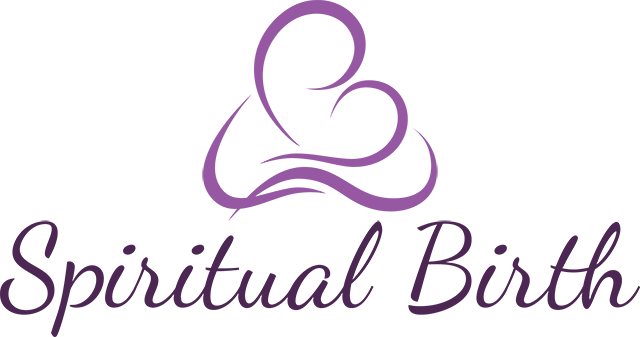
There are many sound scientific reasons why being upright during labour and birth is a good idea.
Firstly, when a woman lies on her back (supine or low semi-reclining position), the heavy uterus compresses the main blood vessels that supply oxygen to the baby. This can lead to ‘fetal distress’ and interventions such as vacuum delivery, forceps delivery or caesarian section.
Secondly, when a woman lies on her back to give birth, the sacrum and coccyx are compressed against the hard surface of the bed, making it more difficult for the joints to be flexible and for the fetal head to descend down the birth canal. In fact, when a woman is upright during labour and birth, the size of the birth canal may be increased by up to 30%. This could mean the difference between ‘fetal distress’ or ‘fetal wellbeing’ and being able to give birth normally or not.2
Thirdly, the uterus contracts against the force of gravity when a woman lies on her back. This slows down the speed and strength of the labour. In other words, labour may take longer and lead to maternal exhaustion.
Fourthly, when a woman lies on her back during the pushing stage, she is pushing the baby against the force of gravity; therefore it takes longer to push the baby out. Both mother and baby may become exhausted.
When women adopt more upright positions for labour and birth, they are less distressed, more comfortable and feel more in control. Babies are also less stressed.3 Midwives are able to touch in ways that give the mother pleasure, such as ‘effleurage’, a gentle stroking of the skin on the mother’s abdomen.
These recommendations are supported by the evidence-based research collated by the Cochrane Collaboration, a global database of systemic reviews of research articles. Professor Justus Hofmeyr, a South African obstetrician, conducted a review of the Cochrane Collaboration on ‘Positions of the mother while giving birth’ and found that upright positions are more comfortable for the mother, shorten the birth time, are better for the baby and do no harm.
So why do most women still deliver their babies in lying down or half-lying positions?
History of Birth
Historically, pictures and artifacts from ancient civilizations depict women giving birth on birth stools, or squatting and kneeling to give birth. Engelman, a 19th century obstetrician, documented upright birth positions used by women all over the world from various peoples and tribal groups. Museum artefacts show many women in giving birth in upright postures.
However British royalty seem to have started the modern trend of lying down for birth in the 17th century, when King Louis XIV wished to watch his mistress give birth from behind a curtain. The forceps delivery, invented by the Chamberlain brothers worked best when the woman lay in the supine position on a bed. Queen Victoria subsequently introduced the use of chloroform during birth. This meant that upper class women using chloroform as a method of pain relief during birth had to lie on their backs.4 It was also more advantageous for doctors and obstetricians to attend births and intervene where necessary when women lay on a bed on their backs.
In westernized countries women are encouraged to give birth in hospitals on waist-high beds so that nursing and medical staff can ‘see’ and manage labour and birth. In South Africa, this trend is followed both in public and private maternity services by midwives and obstetricians alike.
Robbie Davis-Floyd, a cultural anthropologist, expresses it strongly in the following excerpt from an article she wrote: ‘In childbirth, one of the most graphic demonstrations of the power of “doctor’s choice” is the lithotomy position so popular with doctors, not because it is physiologically sound, but because it enables them to attend births standing up, with a clear field for maneuvering. We know very well that this position complicates childbirth, but the many good physiological reasons to allow women to give birth in upright positions (which include increased blood and oxygen supply to the baby, more effective pushing, and wider pelvic outlets) are far less important to most physicians than their own comfort, convenience, and status.’5
Healthy Positions for Labour and Birth
Women should be allowed and entitled to move freely during labour and birth. This does not mean a woman should be prevented from lying down or resting should she so choose. But even when lying down, it is preferable for a woman in labour to lie on her side, as this does not restrict the flow of blood to the placenta and oxygen to the baby. Walking, standing, sitting, kneeling, squatting or supported squatting are all great positions during labour and birth that work with the force of gravity, not against it. These positions place the mother in an egalitarian stance to her caregiver and allow mother and medical caregiver to negotiate the process of giving birth physiologically.
I remember working in a high-risk medical unit and gaining the reputation of allowing women to give birth ‘hanging from the chandeliers’! Despite the fact that many of the women in the high-risk unit had medical complications and needed intervention, when they were able to squat on the delivery bed with their IV lines and catheters attached, they were empowered to push their babies out and felt triumphant when they succeeded. Other women, who delivered their previous babies on their backs on a bed, were delighted to have given birth squatting or kneeling and made comments like ‘I never knew I could do it this way’ and ‘I wish the sister had helped me like this last time’!
Birth in the Future
Medical personnel may be hesitant to assist women into alternative birth positions – perhaps this is due to a lack of practice. As one obstetrician remarked, medical students learn about pathology, not natural birth!
One group of researchers defines evidence-based medicine, as ‘a new method of clinical practice which moves away from textbooks … and moves towards considering whether there is good evidence for each and every procedure we carry out’.6 Tradition must be challenged and true science pursued in the art of midwifery, so that women are empowered and babies are born healthy and undamaged.
Davis-Floyd describes how a medical team were able to move away from tradition and incorporate true science into their practice when a mother delivering in a hospital rejected the delivery bed and asked to deliver on the floor: ‘The physician and nurses attending her asked themselves what science truly demanded in that situation. The answer was that there was nothing scientific at all about giving birth flat on one’s back on a delivery table; it was in fact much more evidence-based to give birth upright on the floor. What science did demand was a clean area for the delivery. So the nurses took the sheets off of the table and put them on the floor, and the woman, propped with pillows, cheerfully sat on top of them to give birth. In other words, ideally, humanistic care should be evidence-based care that reflects real science and not medical tradition.’5
The evidence supports upright postures for labour and birth. What is holding us on our backs? I interviewed a few women who gave birth in hospitals lying on their backs with their feet in stirrups. Jane(not her real name) said the nurses kept on coming in and insistently offering her pain relief in the form of an epidural. When she said ‘no’ for the fifth time, the midwife threatened her saying the anesthetist would not be in the hospital later, it was now or never. Jane succumbed, had her epidural and gave birth with her feet in stirrups. She said she felt completely disconnected from her baby after the birth and struggled with breastfeeding. It took six hours for the feeling to come back in her legs.
Sarah said she was so exhausted by the pain (the sensation of pain increases when a woman is on her back) after a long labour and being strapped to a monitor that she didn’t care any more when the doctor came to do the delivery. Sarah found it hard to push her baby out, and the doctor used a forceps to pull the baby out. She was very sore from the episiotomy afterwards and felt bruised and weak and struggled to feel happy about her baby.
It seems that women in labour or giving birth are vulnerable to suggestion and coercion and even women who are strongly convinced that natural birth is best have found themselves succumbing to the decisions and directions of the midwives and/or doctors.
The secret is to ask the questions in early pregnancy: What positions may I like to take in labour? What kind of person would I like to have around me during birth? What kind of person am I? How strongly do I desire a natural birth?
When you have found the answers to some of these questions, you may wish to change your caregivers, find a ‘doula’, take a hypnobirthing course, be encouraged or just get more information.
References
1. Kitzinger S. Sheila Kitzinger’s letter from Europe: The Clock, the Bed and the Chair. Birth – Issues in Perinatal Care. March 2003.
2. Caldeyro-Barcia R. The influence of maternal position on time of spontaneous rupture of the membranes, progress of labor and fetal head compression. Birth 1979; 6: 10-18.
3. Gupta JK, Hofmeyr GJ. Position in the second stage of labour for women without epidural anaesthesia. The Cochrane Database of Systemic Review 2006 issue 1. The Cochrane Collaboration. John Wiley and Sons, Ltd.
4. Gaskin IM. Ina May’s Guide to Childbirth. New York: Bantam Dell, Random House, 2003.
5. Davis-Floyd R. The technocratic, humanistic, and holistic paradigms of childbirth. International Journal of Gynecology and Obstetrics 2001; 75: S5-S23.
6. Brown H, Nikoderm C, Garner P, Hofmeyr J. Evidence based maternity care and labour support. International Journal of Childbirth Education, 2000.

I actually learned about almost all of this, but with that said, I still believed it turned out valuable. Very good post!